8 Flutter Advantages for Your Next Project: Why Choose Flutter App Development?
Updated: June 4, 2025
Picture this: your Android app is a runaway success, and demand for iOS and lite web versions is skyrocketing. You’re feeling the pressure to launch on multiple platforms, but you’re strapped for cash and time. What are your options in this situation?
Enter cross-platform app development with Flutter – a game-changing technology that lets you create apps for multiple platforms using a single codebase. With the advantages of Flutter, the code you used to build your Android app can be easily adapted and deployed on iOS, the web, or even as a desktop program with minimal modifications. The cherry on top? You’ll never have to maintain multiple codebases again!

We provide companies with senior tech talent and product development expertise to build world-class software. Let's talk about how we can help you.
Contact usThere’s no denying that the market is flooded with many cross-platform frameworks and app development tools, such as React Native, PhoneGap, Ionic, and Xamarin. These frameworks have unique peculiarities and fiercely compete for developers’ attention.
However, Flutter stands out among cross-platform app development technologies. To find out why, let’s dive into the advantages of Flutter, which make it a first choice among developers.
Table of Contents
Definition of Flutter Development
Flutter, developed by Google, burst onto the scene in May 2017 and has since seen explosive growth. It’s now one of the hottest repositories on GitHub, boasting a whopping 151k stars! But Flutter isn’t resting on its laurels. The latest upgrades have brought a slew of exciting new features and improvements to the platform, making it easier and more powerful than ever before.
So, what is Flatter? At its core, Flutter is an open-source technology that lets developers create mobile, desktop, and web apps using a single codebase. What sets it apart from other popular solutions is that it’s not just a framework or library – it’s a complete SDK (software development kit) that provides flexibility in developing frontend and backend applications using a variety of programming languages such as Dart, Java, C/C++, and more.
But that’s not all. Flutter also includes a UI library based on custom widgets, a package of reusable UI elements like buttons, text inputs, and sliders that can fit your needs. That means developers have everything they need to build high-quality, cross-platform apps in one tidy package. No more piecing together disparate components from different sources!
At the heart of Flutter lies the Dart programming language, which is also Google’s brainchild. Dart, a typed object-oriented programming language, is purpose-built for front-end development and shares a similar syntax with JavaScript. It boasts features like garbage collection, strong typing, and asynchronous programming, making it an efficient language for building high-performance mobile, desktop, and web applications.
Flutter Architecture Explained
Flutter’s architecture comprises three layers that collaborate to power the framework.
- The framework layer, built on the Dart programming language, is the most visible part of Flutter and provides developers with a rich set of libraries to develop and design the user interface. This layer can be further subdivided into foundational classes, widgets, and rendering layers.
- The engine layer, written in C/C++, offers a low-level implementation of the Flutter framework, including core APIs such as graphics, accessibility support, text layout, and plugin architecture. It communicates with the framework layer to execute the code and render the user interface.
- The embedder layer is platform-specific and responsible for launching the Flutter engine and providing it with the necessary resources to render the user interface. It enables Flutter apps to run on different operating systems and offers a platform-specific interface for the engine layer to interact with the native platform APIs.
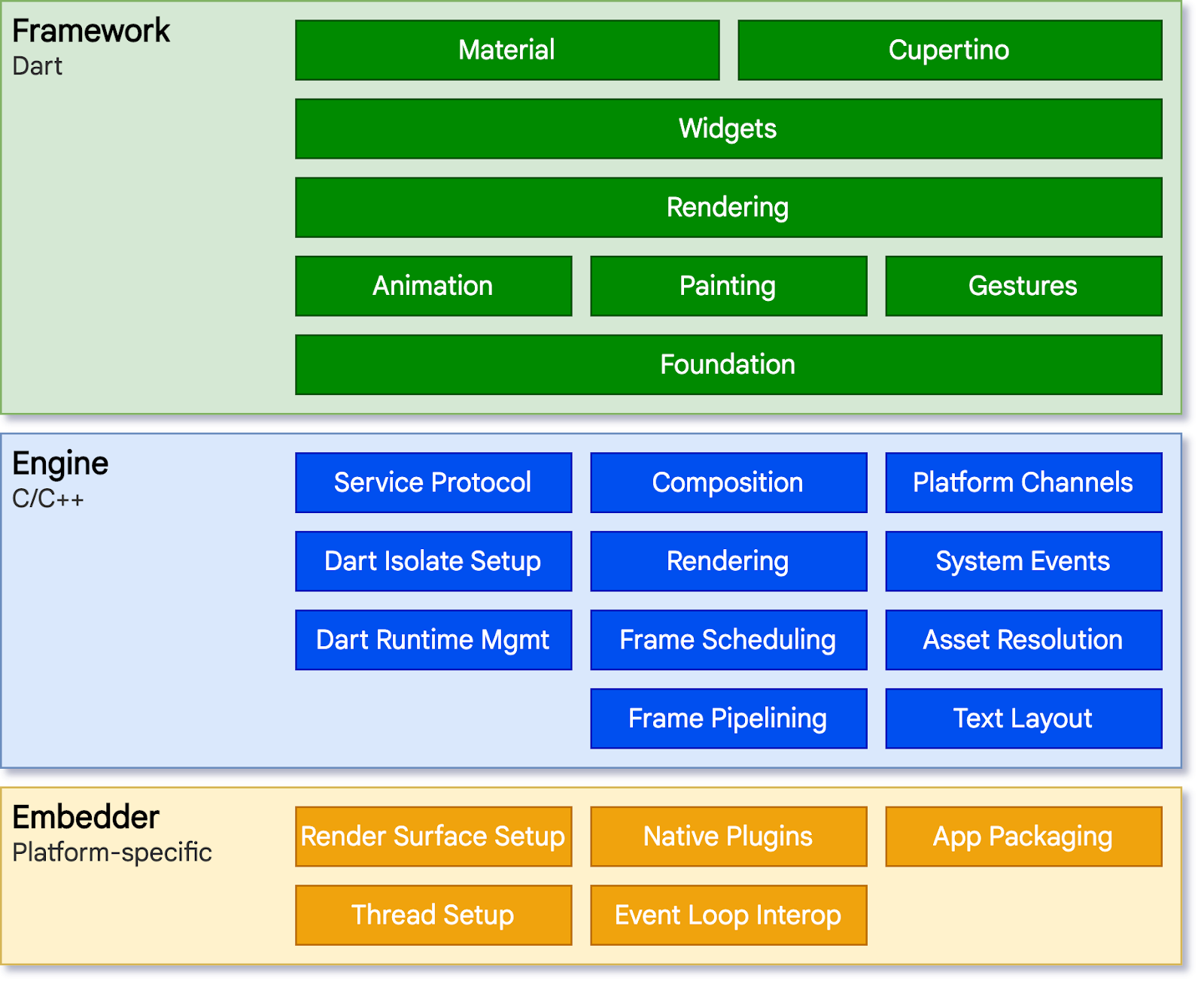
Benefits of Flutter App Development
Flutter continues to gain traction in the world of mobile app development, with 42% of developers opting to use this cross-platform framework. In addition, Flutter also ranked 6th among the most popular technologies in the 2022 Stack Overflow Developer Survey. The reasons behind this popularity are its numerous advantages of Flutter, which we will delve into below:
1. Flutter is a Cross-platform Development Framework
So, what is Flutter used for? With this SDK, you can develop apps that work seamlessly across desktop, mobile, and web platforms without engaging separate developers for each platform. By writing the code once in Flutter, you can be confident that the app will function consistently across all platforms, making it a cost-effective solution for app development.
In addition, adding new features to your app is quick and efficient with Flutter since you only need to update the code once. This approach saves valuable time and resources, enabling you to concentrate on improving the app’s functionality and user experience instead of worrying about platform-specific coding.
2. Same UI and Business Logic in All Platforms
Most cross-platform frameworks enable code sharing between target platforms. However, Flutter is unique because it enables the sharing of UI code and UI itself. That is a strong point of Flutter over other frameworks. For instance, let’s take a look at how UI rendering is typically handled in most cross-platform frameworks:
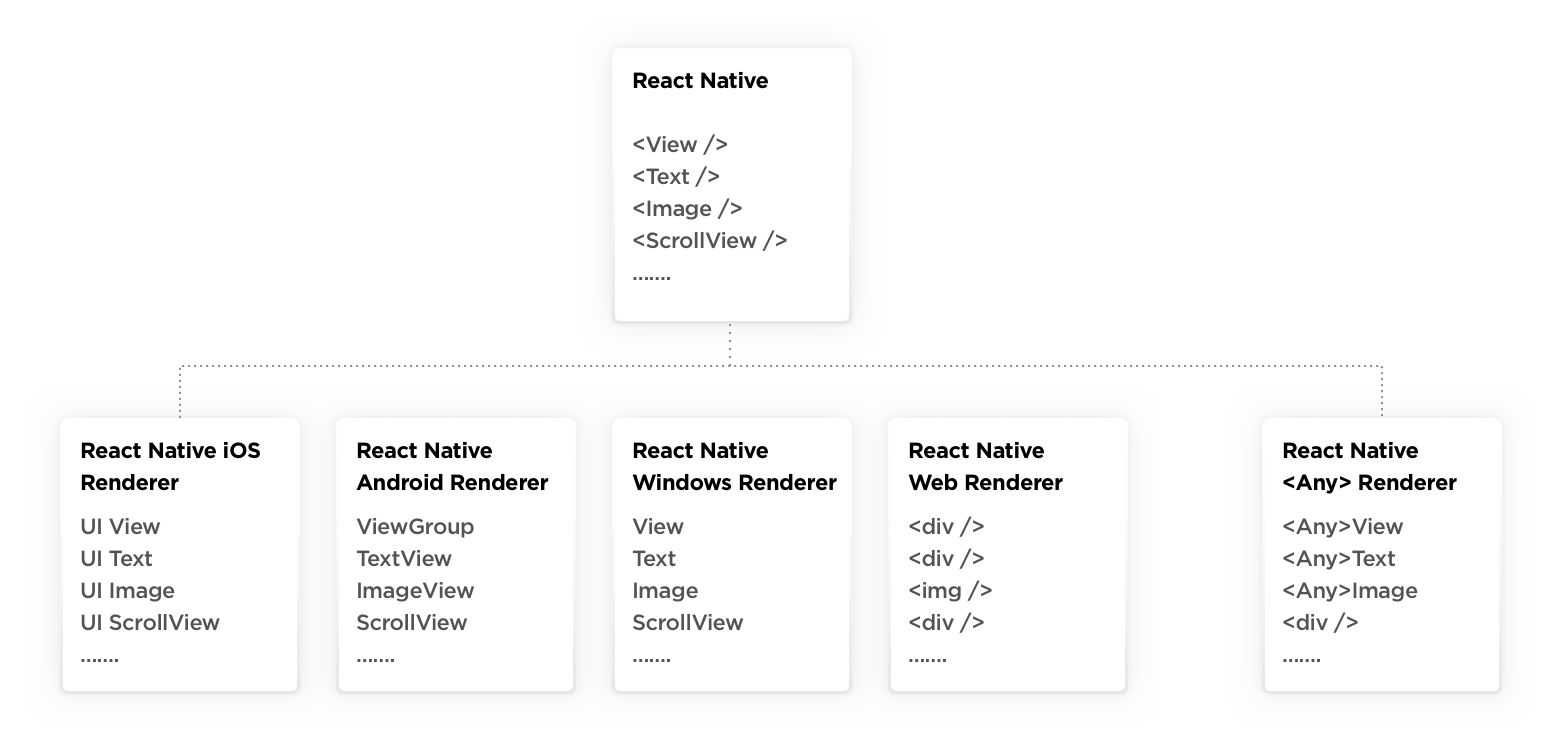
The ability of a cross-platform framework to produce an app that looks native on every platform may seem like a simple process, but complexities are involved. Most of them rely on platform-specific components for rendering, which requires a property mapping layer for the platform and a framework widget data synchronization. That complicates the development process, especially when mapping animations into a platform-specific widget call.
However, with Flutter, there is no need for any platform-specific UI components to render the UI. All Flutter needs is a canvas to draw onto. It simplifies the development process and eliminates the need for additional mapping layers. Here’s a glimpse of how it works:

This approach simplifies the rendering process and eliminates concerns about UI consistency on different platforms. Moreover, Flutter’s capability to share the UI and business logic saves developers time and effort without compromising the final product’s performance.
3. Fast Development due to “Hot Reload” feature
Flutter’s hot reload feature is a powerful tool that greatly speeds up app development. This feature was developed by a team of engineers at Google who wanted to improve developer productivity and ensure they could make changes quickly.
The convenience of hot reload allows for easy experimentation, UI building, feature addition, and bug fixing. It injects updated source code files into the Dart Virtual Machine (VM). After the VM updates classes with new fields and functions versions, the Flutter framework automatically rebuilds the widget tree. Hot reload allows developers to see changes they make to their code in real time, with a sub-second delay between saving the code and the updated version appearing on the same screen.
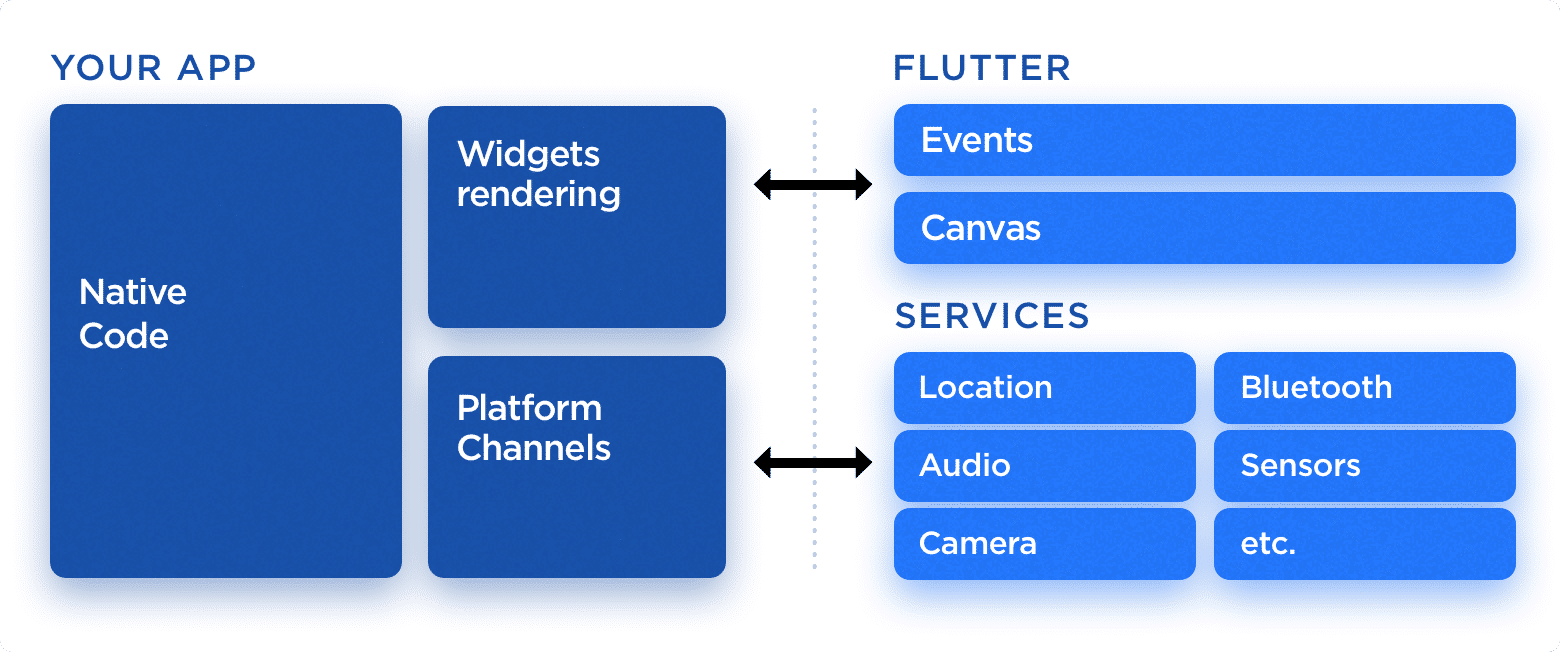
4. Highly Customizable UI Design
Even for complex UI designs, Flutter allows for easy customization, something that’s not always feasible with native platforms. For instance, shared element transitions, shape, color, and shadow manipulations, clipping, and transformations can be achieved effortlessly with Flutter. This makes the process more versatile without adding to the workload. An illustration of how it functions is given below.
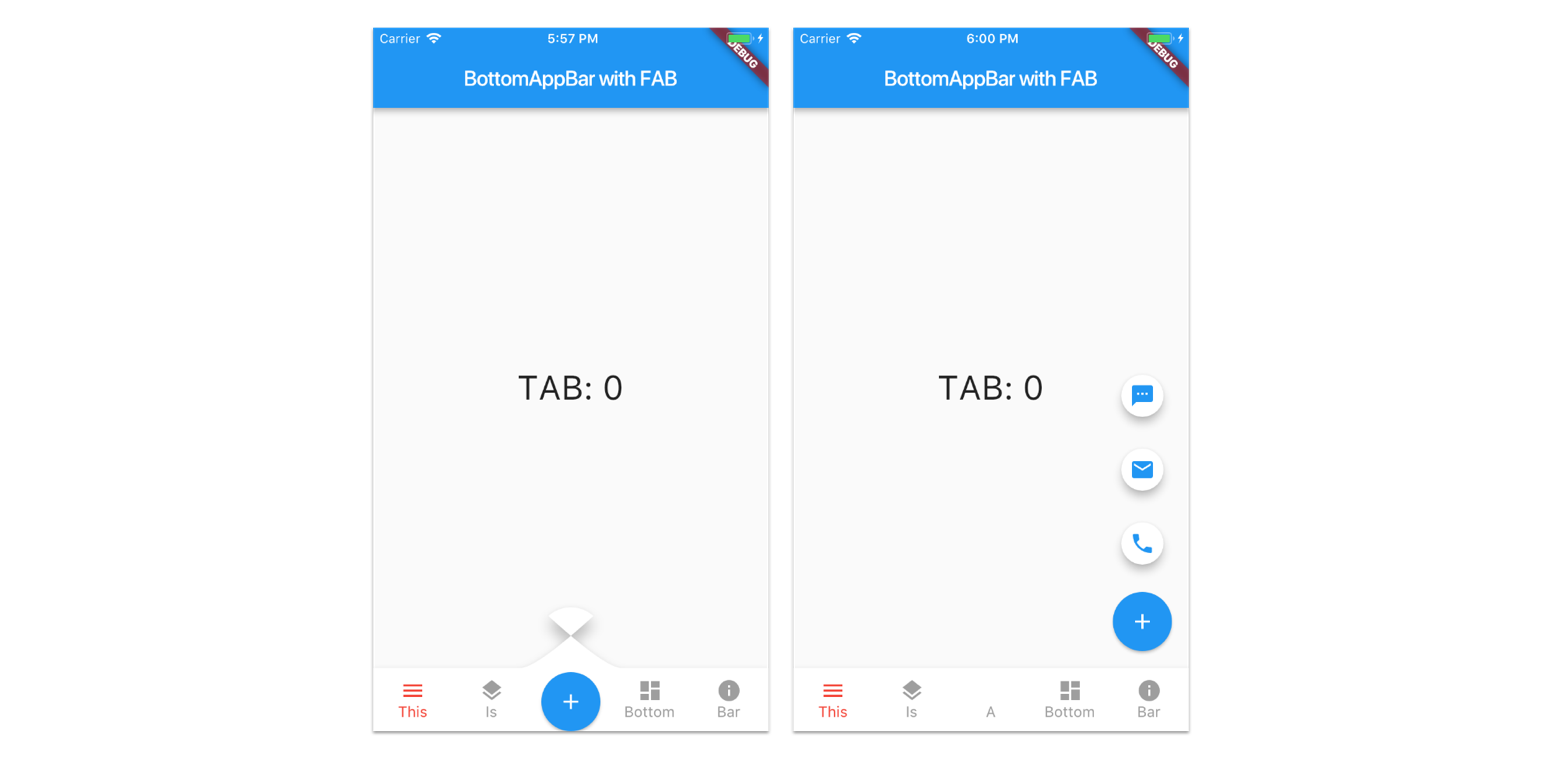
With Flutter’s extensive graphics and animation libraries, developers can create sleek, high-fidelity user interfaces that are visually stunning and react seamlessly to the touch. Plus, Flutter apps can adapt to different screen sizes and aspect ratios and look great on phones and tablets.
Flutter also offers support for 3D graphics, allowing for the utilization of conventional 3D tools such as Blender to create models and 3D meshes. These can be imported into Flutter, programmed, and used similarly to other code components.
5. A Wide Variety of Rich Widgets
Flutter apps are built using widgets, which are their fundamental building blocks. You can use these to create an app’s functional and visual components, such as buttons, text, and user input fields.
Flutter’s widgets are designed to adhere to the Material Design guidelines of Android and the Cupertino style of Apple. With these widgets, customizing the user interface, often the most time-consuming aspect of cross-platform development, can be accomplished with minimal effort.
6. Access to Native Features
Businesses that can’t afford to create native apps frequently choose mobile web pages and progressive web apps (PWAs) instead. However, these alternatives often fall short. That’s where Flutter comes in – it offers native app performance and is a free and convenient way to achieve it using just one framework. Unlike most cross-platform frameworks, Flutter does not rely on intermediate code representations or interpretations. Instead, Flutter apps are built directly into machine code, eliminating any performance bugs associated with the interpretation process. (Here, you’ll discover an in-depth comparison between PWAs and native apps.)
7. Publicly Accessible
Flutter, as an open-source framework, offers a window into the development process, allowing for easy access to the original codebase for your project. With a thriving and supportive community, you can tap into the necessary assistance to build your app and give back to the community by sharing your expertise and reporting bugs. This collaborative approach fosters a culture of perpetual improvement and innovation, making Flutter a platform that is both dynamic and exhilarating to work with.
In addition, Flutter benefits from a solid support and continuous development due to Google’s reliance on the framework. Google’s dedicated team of developers promptly addresses any bugs or issues with Flutter. Additionally, Google uses Flutter to develop the UI and apps for its multi-platform operating system, Google Fuchsia. This level of investment assures Flutter users that the framework will remain relevant and supported in the long run.
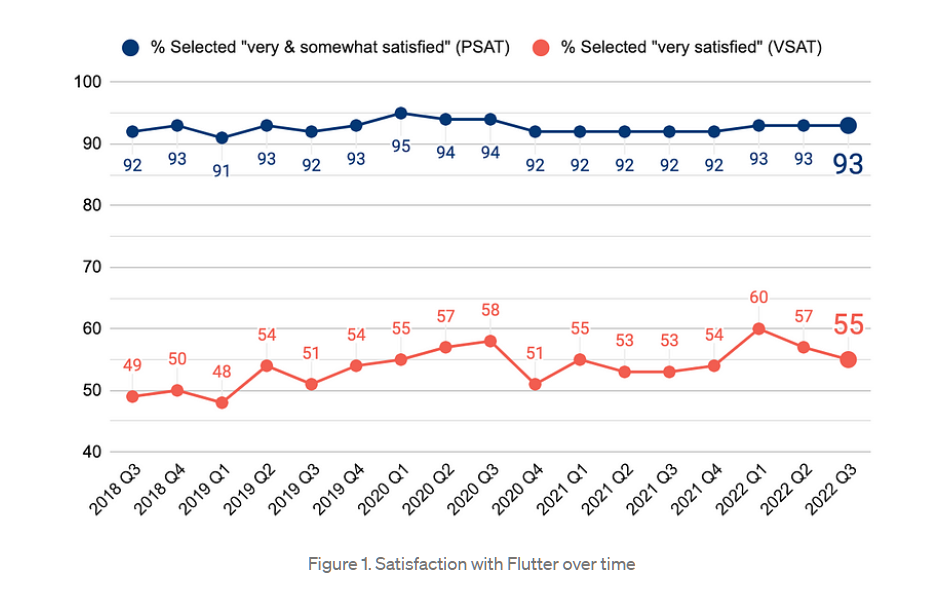
8. Better Performing with the Dart, Skia, and DevTool
Flutter’s performance is often questioned because of its cross-platform nature, but it really matches single-platform frameworks. Traditional Android apps use Java code and Skia graphics engine for rendering, while cross-platform frameworks use an abstraction layer that can result in significant overhead.
However, Flutter bypasses system UI libraries and uses its own widget set with native code compiled from Dart code, resulting in high performance. It also embeds its own copy of Skia to ensure up-to-date performance improvements on all native platforms, including iOS, Windows, and macOS.
Flutter also provides developers with automated testing tools and supports Continuous Delivery through fastlane, allowing seamless integration with popular CI tools. Flutter DevTools makes debugging very effective, with the ability to inspect layouts, analyze performance, and debug apps.
Evolution of the Flutter Framework
Since its inception as a mobile-focused SDK for creating native Android and iOS apps with a single codebase, Flutter has evolved significantly. With the release of Flutter 2 in 2021, the framework finally gained the ability to build apps for the web and Windows. Flutter 3, which arrived in 2022, brought stable support for Linux and macOS running on both Intel and Apple Silicon processors. That means experienced Flutter developers can now design UIs across six platforms.
In addition to expanding its reach, Flutter 3 introduced features targeted at the gaming industry. The SDK has added a new tool, the Casual Games Toolkit, which simplifies the process of designing iOS and Android puzzles, card and board games, and strategies. The toolkit is pre-integrated with AdMobs for in-app advertising and purchases to assist with monetization. Furthermore, it facilitates seamless integration with Apple’s Game Center and Google Play Games Services.
Other improvements in Flutter 3 include support for foldable phones and the latest version of Material Design, called Material Design 3, which is focused on creating beautiful UIs for Android. Additionally, integration with Firebase backend services, used by a majority of Flutter developers, has been improved.
The version of Flutter 3.3 was released with improvements and provides better support for all desktop platforms, like macOS and Linux for desktop applications. You can check out its Flutter changelog document. Also, Google released Dart 2.18 with new support for Objective-C and Swift interop.
Version 3.7 of Flutter was introduced on January 25, 2023. This release features numerous updates and enhancements, including the capability to compile to WebAssembly, enhanced graphics performance, improved interoperability between JavaScript and Dart, and the ability to incorporate Flutter components into web applications.
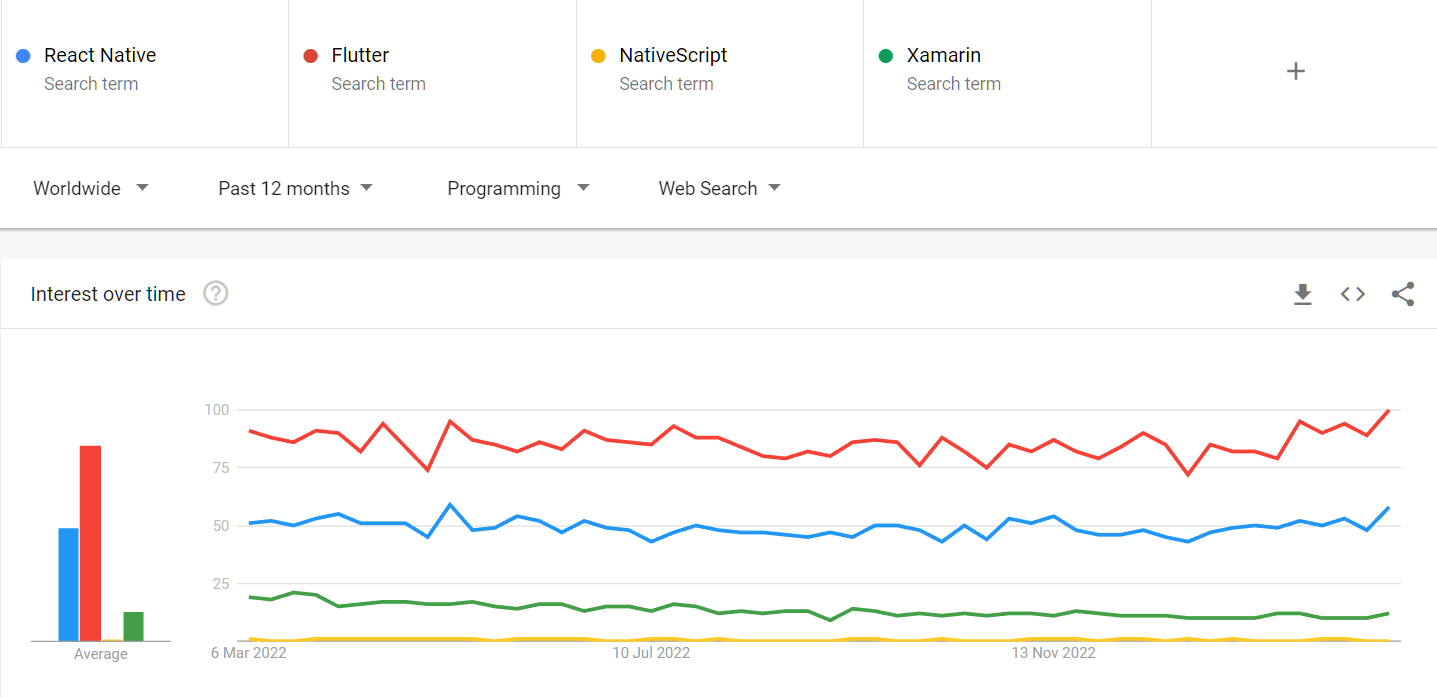
Can Flutter be a Beneficial Solution for Businesses?
From a business perspective, Flutter can be a valuable solution for app development. Here are some of the reasons why:
- More rapid development: Flutter’s hot-reload feature allows developers to see changes in real-time, making it easier to iterate and quickly make changes to the app. It can lead to faster development times and quicker time-to-market for your app.
- Compatibility across platforms: With Flutter, you can build apps for all available platforms from the same codebase. It can save time and money compared to developing separate apps for each platform.
- Cost-effectiveness: Flutter, being an open-source platform, does not entail any licensing fees or expenses, making it an economical option for businesses interested in app development.
- Consistent user experience: Flutter’s widgets ensure a consistent user experience across different platforms, which can boost user engagement and satisfaction.
- Active and growing community: Flutter’s community of developers provides plenty of resources available to help businesses overcome any challenges they may face during development.
While some skeptics may point out the existing shortcomings of Flutter as a reason not to fully invest in the SDK, the business and development benefits outlined above lead to a more optimistic outlook. The robust support and promotion of Flutter by Google will undoubtedly result in this technology’s continued growth and development. This suggests that implementing it today can offer advantages of Flutter in the future.
So Why Try Flutter?
There are four main scenarios when you should consider using Flutter.
- Firstly, when you need to build a prototype or develop a minimum viable product (MVP), Flutter’s cross-platform SDK, builder tool, and extensive UI components enable rapid application development.
- Secondly, if beautiful user interfaces are critical to your app’s success, Flutter uses Material Design for its UI widgets, ensuring that your app looks natural on Android and iOS devices. If you want to create pixel-perfect graphics, Flutter is an excellent choice.
- Thirdly, when your app requires high performance or custom user interfaces, Flutter provides exceptional rendering speed, a flexible layout system, and fluid animations. These features enable your app to run smoothly, with high-end visuals that users will love. Moreover, Flutter’s custom UI support allows you to create a unique user experience.
- Lastly, for apps intended for a global audience or those with location-specific features catering to multiple countries, Flutter supports internationalization. With support for 78 languages, it offers features such as currency, a unit of measure, date formats, and layout options for right-to-left languages.
The above-mentioned reasons showcase why Flutter is gaining momentum among businesses and organizations. And if you still need to be convinced, look at the big guys choosing that SDK. Google uses it for several modules of the Google Assistant and even the Google Home hub user interface. And it’s not just limited to Google. E-commerce giants like eBay, Groupon, and Alibaba Group rely on Flutter to give their mobile and web apps a uniform look that sets them apart.
Final words about advantages of Flutter
After a thorough evaluation, it is evident that Flutter offers unparalleled benefits, including faster development and cost savings. It can be a game-changer for startups with limited budgets and the need to reach a wider audience. By hiring Flutter developers, businesses can build MVPs faster, avoiding the clutter of bringing in a pool of experts. If these advantages of Flutter appeal to you, consider Flutter app development for your business.
Relevant, a proficient and versatile Flutter app development company, can assist you in achieving your vision of building an app with Flutter. Our clients and we have tried and tested this innovative framework, offering high-quality results without large investments in time and money. Why not give it a chance and experience Flutter benefits for yourself? If we have sparked your interest, feel free to contact us today.
FAQ
Our core services:
Do you want a price estimate for your project?
Do you know that we helped 200+ companies build web/mobile apps and scale dev teams?
Let's talk about your engineering needs.
Write to us











